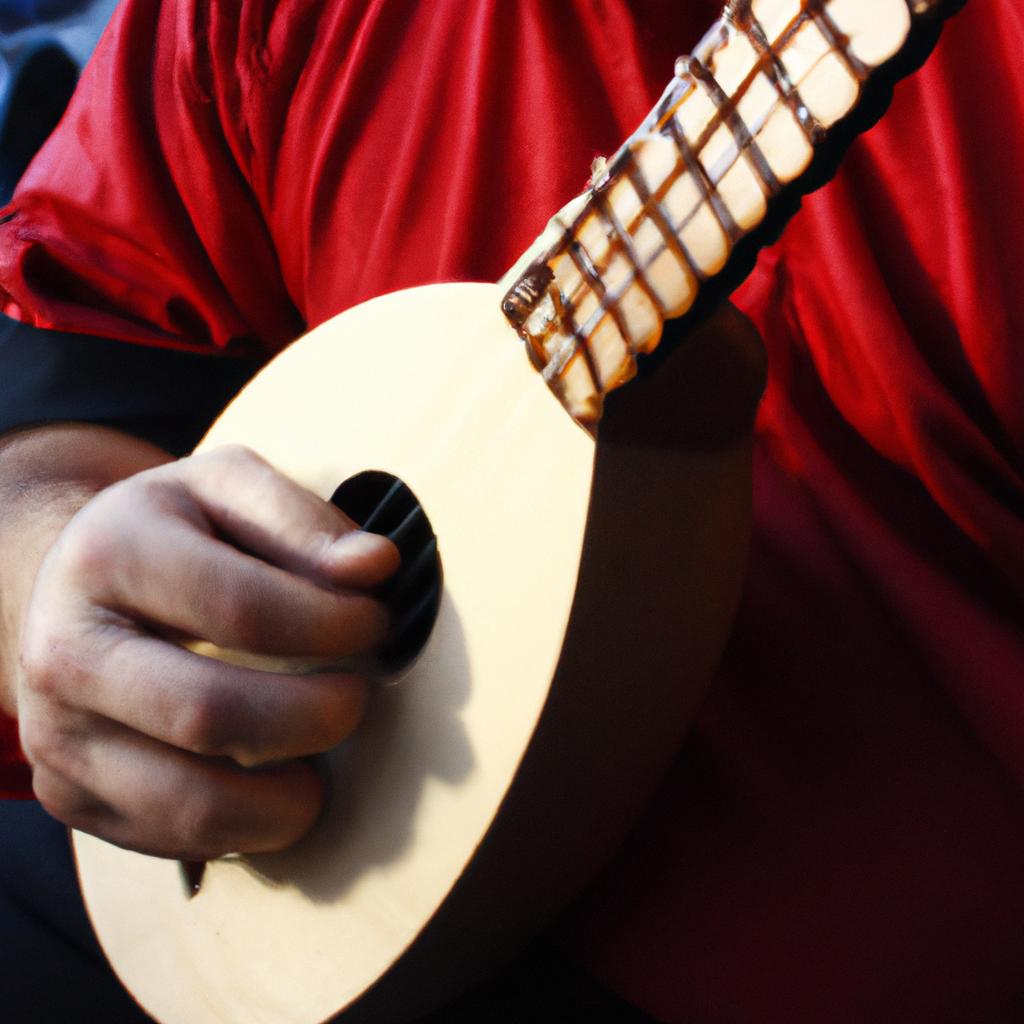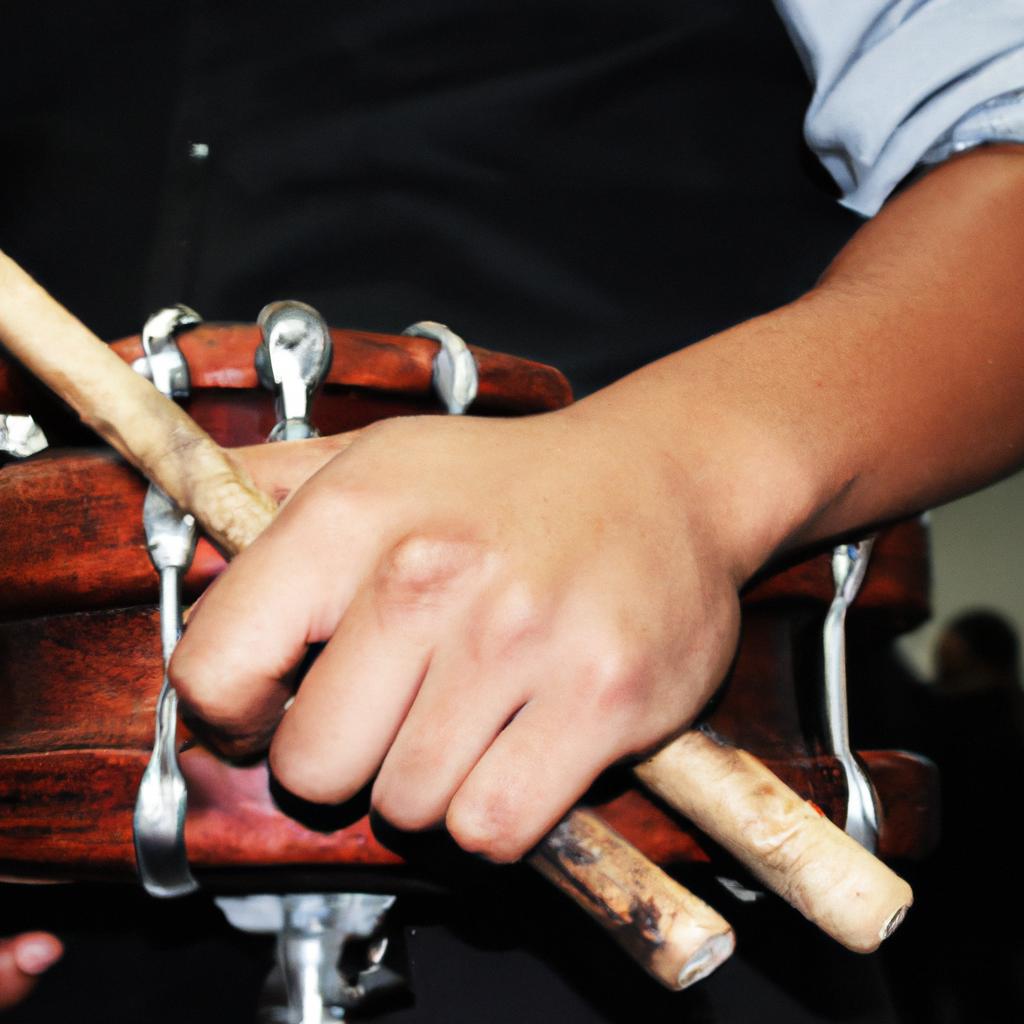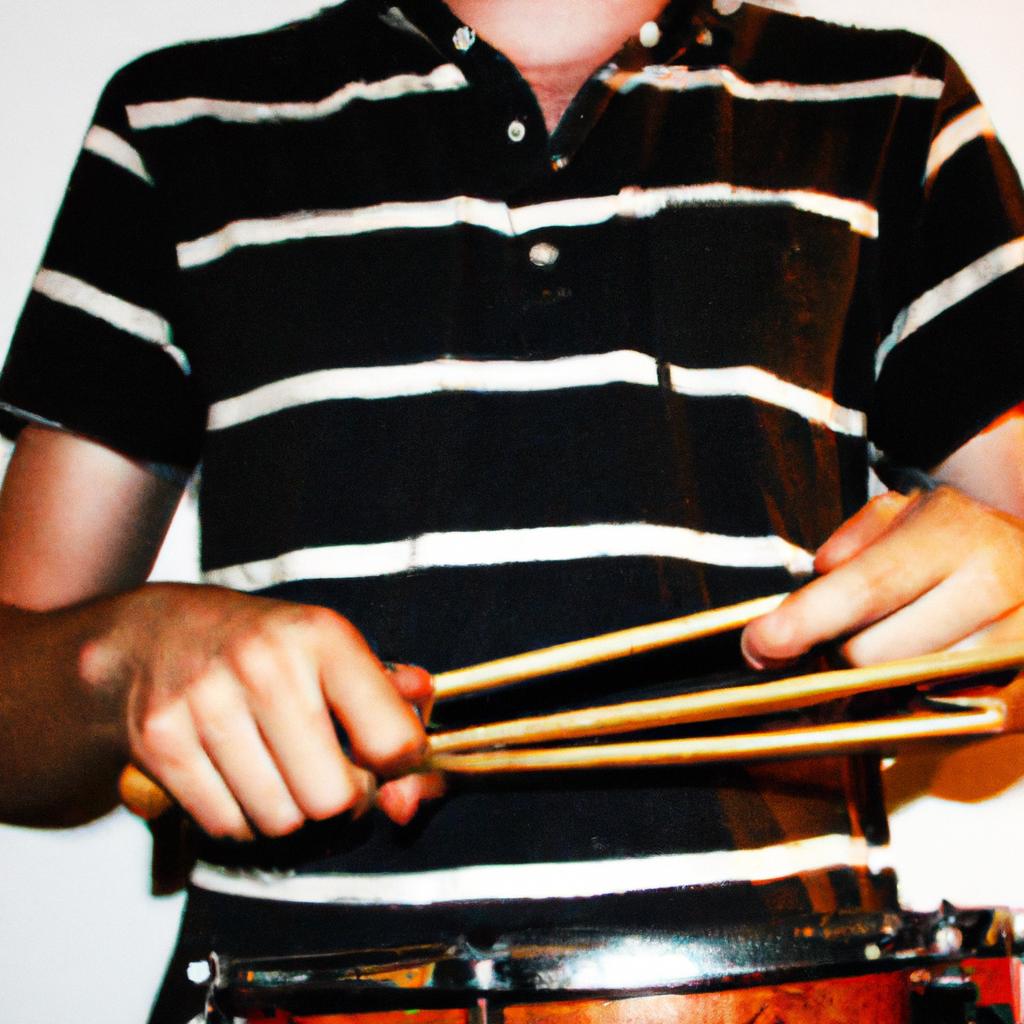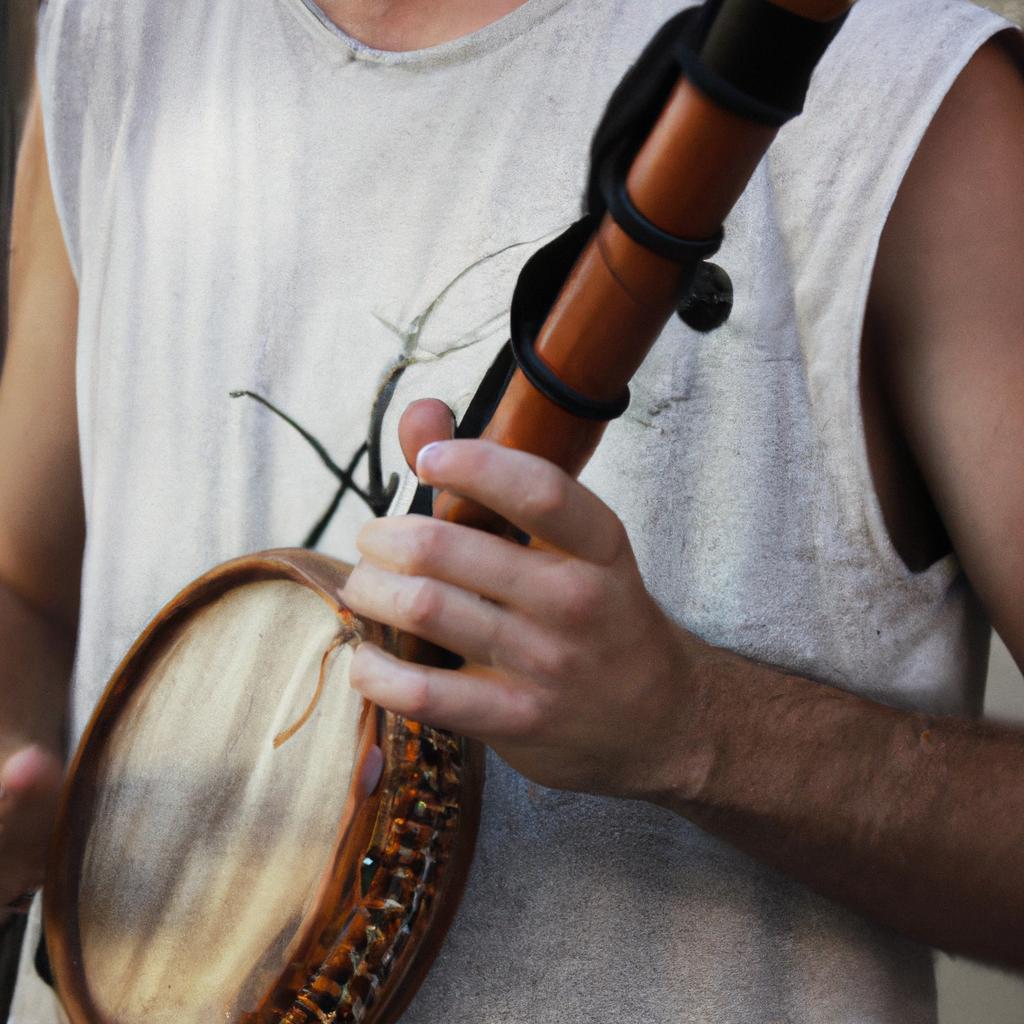Concerto: An Informative Look at Classical Music’s Artistic Gem
Imagine a grand concert hall, filled with eager spectators awaiting the start of a performance. The stage is adorned with an array of musicians, each poised with their respective instruments. As the conductor raises his baton, the orchestra begins to play in harmonious unison, captivating every listener present. This scene represents the magic and allure of the concerto, a genre that has enthralled audiences for centuries. In this article, we will delve into the depths of this artistic gem within classical music, examining its history, structure, and impact on both composers and listeners.
The concerto can be traced back to 18th-century Europe when it emerged as a prominent form of musical expression. It typically features a solo instrument or group of instruments accompanied by an orchestra. One renowned example is Ludwig van Beethoven’s Piano Concerto No. 5 in E-flat major, also known as “Emperor.” This masterpiece showcases the seamless interplay between piano and orchestra through its three movements – Allegro con brio, Adagio un poco mosso, and Rondo: Allegro ma non troppo – transporting listeners on an emotional journey from bold triumph to tender introspection .
The structure of a concerto typically follows a three-movement format, similar to that of a symphony. The first movement, known as the allegro, is often fast-paced and energetic, serving as an introduction to the main themes and showcasing the technical prowess of the soloist. The second movement, typically marked by a slower tempo such as adagio or andante, provides a moment of reflection and emotional depth. Finally, the third movement returns to a faster tempo, usually in rondo or sonata form, bringing the concerto to an exhilarating conclusion.
Composers have been drawn to the concerto for its unique ability to highlight both individual virtuosity and collective musicality. It offers a platform for soloists to showcase their technical skill and interpretive artistry while collaborating with an orchestra. This dynamic between soloist and ensemble creates a captivating dialogue that captivates listeners.
Moreover, the concerto has had a profound impact on composers throughout history. It allowed them to experiment with different instrumental combinations and explore new possibilities within orchestration. Composers like Wolfgang Amadeus Mozart, Johann Sebastian Bach, Antonio Vivaldi, and Pyotr Ilyich Tchaikovsky have all contributed iconic concertos that have become beloved staples of classical music repertoire.
For listeners, the concerto offers an immersive experience that combines intellectual engagement with emotional resonance. It allows audiences to witness the mastery of both soloist and orchestra, experiencing firsthand the power of live performance. Whether it’s the thunderous cadenzas of Rachmaninoff’s Piano Concerto No. 3 or the lyrical melodies of Johannes Brahms’ Violin Concerto in D major, each concerto offers its own unique journey into the depths of human expression.
In conclusion, the concerto remains an artistic gem within classical music that continues to captivate audiences worldwide. Its rich history stretches back centuries and its timeless structure and emotional impact make it a cherished genre for both composers and listeners alike. So the next time you find yourself in a grand concert hall, prepare to be transported by the magic of the concerto – an extraordinary fusion of skill, passion, and beauty.
The Origins of the Concerto
Imagine yourself in a grand concert hall, surrounded by an eager audience. The orchestra takes their places, and suddenly the soloist emerges from the shadows. As they begin to play, a sense of anticipation fills the air. This captivating experience is none other than a concerto—a musical masterpiece that has been enchanting audiences for centuries.
The origins of the concerto can be traced back to the Baroque period in the 17th century. One notable example of this early form is Antonio Vivaldi’s “Four Seasons,” which showcases virtuosic violin solos accompanied by a small ensemble. During this time, composers began experimenting with contrasting textures and dynamics between soloists and larger orchestras, giving birth to the concept of the concerto.
To understand its significance, let us explore four key elements that make the concerto such an artistic gem:
- Soloistic Brilliance: At its core, a concerto highlights exceptional individual talent through virtuosic solo passages. These awe-inspiring moments allow performers to showcase their technical prowess and creative interpretation, leaving audiences spellbound.
- Orchestral Dialogue: A hallmark feature of the concerto is its interplay between soloist(s) and orchestra. Through intricate dialogues and exchanges between these two entities, composers create dynamic tension and harmonic depth.
- Emotional Expression: Whether it evokes joy or sorrow, a concerto possesses an innate ability to stir profound emotions within its listeners. The juxtaposition of delicate melodies with powerful crescendos creates an emotional journey that resonates long after the final note fades away.
- Structural Intimacy: In contrast to symphonies or operas, concertos offer a more intimate setting where musicians have room for improvisation within predefined structures. This balance between strict composition guidelines and personal expression allows performers to infuse their unique artistry into each rendition.
In examining these fundamental characteristics, it becomes evident how the concerto has endured and captivated audiences throughout history. As we delve further into our study of this musical form, let us now explore its evolution in “The Evolution of the Concerto Form.”
The Evolution of the Concerto Form
From its humble beginnings to its current status as a beloved musical form, the concerto has undergone significant evolution throughout history. In this section, we will delve into the fascinating journey of the concerto’s development, exploring how it transformed over time.
One example that showcases the evolving nature of the concerto is Antonio Vivaldi’s “The Four Seasons.” Composed in the early 18th century, this iconic work consists of four violin concertos, each representing a different season. Through his innovative use of programmatic elements and vivid musical imagery, Vivaldi pushed the boundaries of traditional concerto writing, highlighting both technical virtuosity and expressive storytelling within the genre.
As we trace the evolution of the concerto form further, several key developments emerge:
-
Expansion of Orchestra: With composers seeking grander soundscapes and more extensive tonal possibilities, orchestras grew larger over time. This expansion allowed for greater complexity in orchestral textures and enabled composers to fully explore their creative visions.
-
Enhanced Virtuosic Elements: As soloists became increasingly skilled on their instruments, composers began incorporating more demanding passages into their concertos. These technically challenging sections showcased performers’ mastery while captivating audiences with displays of sheer brilliance.
-
Shifts in Formal Structure: The classical era witnessed a transformation in concerto structure, moving away from improvisatory practices towards standardized forms such as sonata-allegro. This shift allowed for clearer organization and coherence within individual movements.
-
Emphasis on Expressive Depth: Romantic-era composers embraced emotional intensity and introspection in their concertos, emphasizing lyrical melodies and dramatic contrasts. They sought to elicit deep emotional responses from listeners, often infusing personal narratives or poetic themes into their compositions.
To further illustrate these developments visually, let us consider a table showcasing some noteworthy examples from different periods:
| Period | Composer | Notable Concerto |
|---|---|---|
| Baroque | Johann Sebastian Bach | Concerto for Two Violins in D minor |
| Classical | Wolfgang Amadeus Mozart | Piano Concerto No. 21 in C major |
| Romantic | Pyotr Ilyich Tchaikovsky | Violin Concerto in D major |
| Modern | Igor Stravinsky | “Ebony Concerto” |
As we can see, each period brought unique contributions to the concerto genre, resulting in an ever-evolving artistic form that captivates audiences to this day.
Transitioning seamlessly into the subsequent section on “Key Characteristics of a Concerto,” we now turn our attention towards examining the defining features that make this musical gem truly remarkable.
Key Characteristics of a Concerto
The Evolution of the Concerto Form: A Journey Through Time
In this section, we will delve deeper into the evolution of the concerto form, exploring its development over various periods in classical music. To better understand this progression, let’s consider a hypothetical case study involving an imaginary composer named Anna.
Anna: An aspiring musician during the Baroque era, Anna was captivated by the emerging concerto form and sought to incorporate it into her compositions. She began experimenting with contrasting musical elements, showcasing virtuosic solo passages against an orchestral backdrop. This juxtaposition became one of the defining characteristics of the concerto genre.
As the composers of subsequent eras built upon Anna’s pioneering work, several key characteristics emerged that are consistently present in concertos across different time periods:
- Soloist-Orchestra Relationship: The relationship between the soloist and orchestra is central to a concerto. They engage in a dialogue where each entity complements and responds to one another.
- Three-Movement Structure: Most concertos follow a three-movement structure – fast-slow-fast – providing contrast and variety for both performers and listeners.
- Cadenzas: These improvised or written-out sections allow soloists to showcase their technical prowess within the framework of the composition.
- Dynamic Expressiveness: Concertos often exhibit dramatic contrasts in dynamics, tempo, and mood, evoking intense emotional responses from audiences.
To further illustrate these concepts visually, let us examine a table comparing notable features found in different periods of classical music:
| Period | Soloist-Orchestra Relationship | Three-Movement Structure | Cadenzas | Dynamic Expressiveness |
|---|---|---|---|---|
| Baroque | Dialogue-like interaction | Fast-slow-fast | Improvised | Contrasting dynamics |
| Classical | Greater balance, cooperation | Fast-slow-fast | Written-out | Graceful and nuanced |
| Romantic | Soloist as a virtuosic individual | Expansive and varied | Improvised or written-out | Extreme emotional range |
| Modern | Experimentation with new orchestral combinations | Flexible structure | Varied approaches | Innovative dynamics |
As we conclude this section on the evolution of the concerto form, we transition into our next topic: Famous Composers and Their Concertos. By examining the works of renowned composers throughout history, we gain valuable insights into how they contributed to shaping this artistic gem.
[Transition Sentence] Now let’s explore the masterpieces created by these brilliant minds that continue to enthral audiences worldwide.
Famous Composers and Their Concertos
Section Title: The Historical Evolution of the Concerto
Transitioning smoothly from our exploration of the key characteristics of a concerto, let’s now delve into its historical evolution. To shed light on this topic, we will examine one notable example that showcases the journey of the concerto through different periods and styles.
Imagine yourself transported to Vienna in the late 18th century. It is here where we witness an exquisite performance by Wolfgang Amadeus Mozart, who presents his Piano Concerto No. 21 in C major. This composition serves as an excellent case study to understand how concertos have evolved over time.
Throughout history, several factors have influenced the development of concertos:
- Musical Forms: Composers experimented with various musical forms such as sonata-allegro, theme-and-variations, and rondo to structure their concertos effectively.
- Instrumentation: As orchestras expanded in size and range during the Romantic era, composers began incorporating new instruments into their concertos, expanding both tonal possibilities and expressive potential.
- Virtuosic Displays: With advancements in instrumental technique came a desire for virtuosic displays within concertos. Soloists sought opportunities to showcase their technical prowess through intricate passages and dazzling cadenzas.
- Collaborative Dialogue: The relationship between soloist and orchestra transformed significantly throughout history. Initially characterized by a more hierarchical interaction, later periods saw greater collaboration between soloists and ensembles.
To better illustrate these changes across different eras, consider the following table showcasing selected famous concertos alongside their respective composers and significant features:
| Composer | Significant Features | |
|---|---|---|
| Baroque | Antonio Vivaldi | Contrasting ritornello structure |
| Classical | Ludwig van Beethoven | Integration of symphonic elements |
| Romantic | Pyotr Ilyich Tchaikovsky | Emphasis on emotional expression |
| 20th Century | Igor Stravinsky | Unconventional tonality and rhythm |
As we can see, the concerto has undergone a fascinating evolution over time, adapting to societal, cultural, and musical changes. From Vivaldi’s concise Baroque compositions to Stravinsky’s innovative experimentation in the 20th century, each era adds its unique flavor to this artistic gem.
Transitioning seamlessly into our next section about “The Role of Soloists in Concertos,” let us now uncover the significance of solo performers within these captivating musical works.
The Role of Soloists in Concertos
As we delve deeper into the world of concertos, it becomes evident that soloists play a crucial role in bringing these musical compositions to life. By showcasing their virtuosity and interpretive skills, they add an extra layer of excitement and emotional depth to the performance. Let us now explore the intricate relationship between soloists and concertos.
Paragraph 1:
To illustrate this dynamic interaction, let’s consider the hypothetical case of a renowned violinist performing Tchaikovsky’s Violin Concerto in D major. In this scenario, the soloist takes center stage as he navigates through intricate passages filled with technical complexities and expressive melodies. His mastery over the instrument shines through as he flawlessly executes rapid arpeggios and impassioned cadenzas. The orchestra acts as both accompaniment and counterpart to his melodic lines, providing a rich backdrop against which his virtuosic abilities can truly shine.
Paragraph 2:
The collaboration between soloist and orchestra is not limited to mere synchronization; rather, it involves a delicate balance where each entity complements the other. To better understand this complex interplay, let’s examine some key aspects of the soloist’s role:
- Expressiveness: Through subtle nuances in dynamics, phrasing, and articulation, soloists infuse their interpretation with emotion, allowing listeners to connect on a profound level.
- Improvisation within structure: While adhering to the composer’s intentions, soloists often have creative freedom during certain sections or cadenzas. This artistic license allows them to showcase their individuality while staying true to the overall composition.
- Dialogue with the conductor: A successful concerto performance requires effective communication between the soloist and conductor. Their ability to anticipate cues and respond accordingly ensures a cohesive rendition.
- Collaboration with fellow musicians: During orchestral tutti sections, when all instruments play together, the soloist must blend seamlessly with the ensemble, creating a unified musical experience.
Paragraph 3:
In essence, the role of a soloist in a concerto extends beyond technical proficiency; it entails an artistic interpretation that captivates and engages audiences. By immersing themselves in the music and collaborating harmoniously with orchestral forces, soloists breathe life into these compositions. Their ability to evoke powerful emotions through their performance is what makes concertos such cherished gems within classical music’s vast repertoire.
With an understanding of the pivotal role played by soloists, we can now explore how concertos have made a lasting impact on classical music as a whole.
The Impact of Concertos on Classical Music
Section H2: The Impact of Concertos on Classical Music
Building upon the significance of soloists in concertos, it is crucial to delve into their profound impact on classical music as a whole. By exploring how these compositions have shaped and influenced the genre throughout history, we can gain a deeper appreciation for their artistic value.
Paragraph 1:
To illustrate the lasting influence of concertos, let us consider the case study of Ludwig van Beethoven’s Piano Concerto No. 5 in E-flat major, also known as the “Emperor Concerto.” This masterpiece not only showcases Beethoven’s extraordinary compositional skills but also demonstrates his innovative approach to integrating soloist and orchestra. By assigning equal importance to both elements, this concerto revolutionized the traditional hierarchy between soloist and accompaniment, paving the way for future composers to explore new possibilities within the genre.
Moreover, concertos have had a significant impact by pushing boundaries and expanding musical techniques. Here are some key aspects that highlight their influential role:
- Fusion of virtuosity and expression: Concertos often require exceptional technical proficiency from soloists while allowing them ample opportunities for personal interpretation. This delicate balance has inspired musicians across generations to strive for excellence while infusing emotion into their performances.
- Evolution of orchestration: Composers consistently experiment with different orchestrations in concertos, incorporating diverse instruments and textures to create unique sonic landscapes. These innovations have contributed to the development of orchestral writing techniques seen in later symphonic works.
- Development of thematic material: Through the interaction between soloist and orchestra, concertos provide a platform for composers to develop melodic ideas extensively. Themes introduced by the soloist are often subject to intricate variations or transformations throughout the composition, showcasing refined craftsmanship.
- Influence on other genres: The influence of concertos extends beyond classical music itself; traces of their structural complexity and emotive qualities can be found in various genres, including jazz and popular music. This cross-pollination has enriched the overall musical landscape.
Paragraph 2:
To further illustrate the impact of concertos, consider the following table showcasing several renowned compositions that have left an indelible mark on classical music:
| Composer | Concerto Title | Notable Contribution |
|---|---|---|
| Wolfgang Amadeus Mozart | Piano Concerto No. 21 in C major | Blending elegance with virtuosity |
| Johannes Brahms | Violin Concerto in D major | Integration of symphonic elements into a concerto structure |
| Pyotr Ilyich Tchaikovsky | Piano Concerto No. 1 in B-flat minor | Evocative melodies coupled with technical brilliance |
| Sergei Rachmaninoff | Piano Concerto No. 3 in D minor | Displaying exceptional pianistic prowess while maintaining lyricism |
This diverse selection demonstrates how concertos from different eras and composers have contributed distinct artistic qualities to classical music, influencing subsequent generations.
Paragraph 3:
The impact of concertos extends far beyond their initial composition and performance, as they continue to inspire musicians and audiences alike. The emotional journey experienced through these works is unparalleled; it transcends language barriers and reaches deep within our souls. From the exhilaration felt during virtuosic passages to the profound moments of introspection found within slower movements, concertos evoke a wide range of emotions that connect us to the very essence of human expression.
Through their enduring legacy, concertos serve as beacons guiding future generations toward new artistic possibilities. As we appreciate their historical significance and ongoing influence, we are reminded of the transformative power inherent in classical music’s most cherished gem – the concerto.
[End of Section H2]




